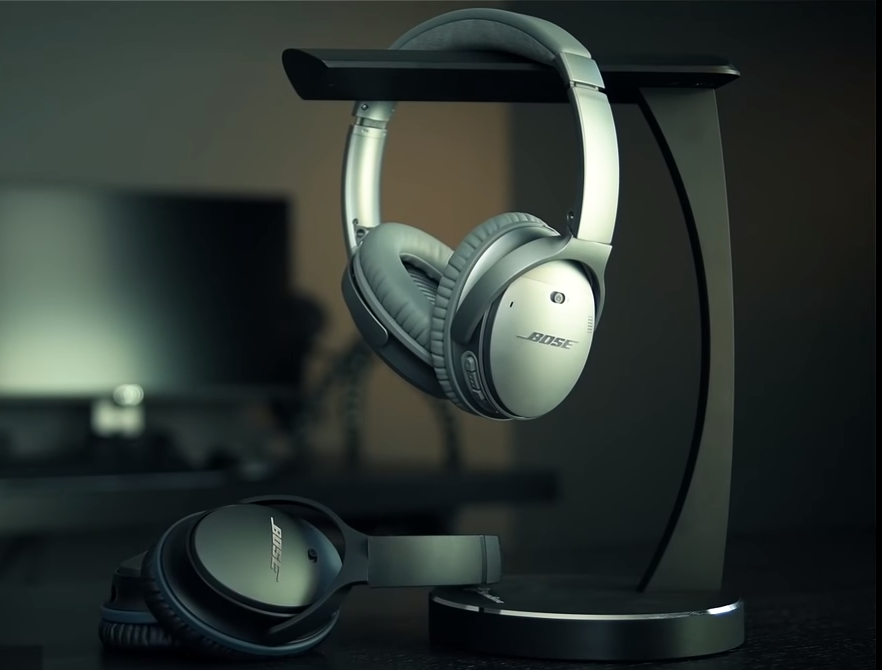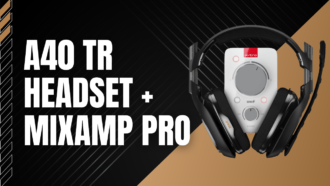Bose QuietComfort 35 Review
- 1 Bose QuietComfort 35 Specifications
- 1.1 Pros
- 1.2 Cons
- 1.3 Build Quality
- 1.4 Design
- 1.5 Battery Life
- 1.6 Noise Cancellation
- 1.7 Audio Presentation
For a long time, Bose’s QuietComfort headphones were a big reason for the company’s leadership in active noise cancellation. While the company’s new Noise Cancelling 700 Headphones (terrible name, I know) are great, the Bose QuietComfort 35 II was previously the gold standard in noise-cancelling headphones. Since its release in 2017, we have used the Bose QuietComfort 35 II to learn about its features. Is it a good investment, especially when compared to the newest Bose headphones and other options?
Bose QuietComfort 35 Specifications
| Dimension | 9.5 in x 11.1 in x 4.5 in |
| Weight | 7.94 oz |
| Headphone Form Factor | Circumaural |
| Connectivity Technology | Wired |
| Sound Output Mode | Stereo |
| Frequency Response | 3 GHz |
| Active Noise Cancellation | YES |
| Microphone | No |
| Cable Type | Mini-phone stereo 3.5 mm 4-pole |
Pros
- Excellent isolation from background noise.
- Intense and well-balanced sound.
- Allows for both wired and wireless operation.
Cons
- The cable doesn’t come with a remote control.
- Regarding EQ sculpting and dynamics, DSP profoundly affects the sound signature.
Build Quality

This set of headphones looks very stylish. The headphones are as comfortable as the original model and keep the same svelte form factor. If you’re looking for headphones that won’t bother your ears, go no further than the Bose QuietComfort 35 II. After wearing it for a long time, you won’t need to take it off to let your ears breathe. It’s incredibly sturdy and resistant to damage from being bent or twisted.
However, the provided carrying case is so convenient that you should use it. In addition to the action and multifunction buttons, the right ear cup also features a volume up/down button and a power on/off switch. You’ll find the micro USB charging port on the underside of one ear cup and a 3.5mm input on the other for use with a device that supports such a connection, such as an older smartphone.
Design

The QuietComfort 35 boasts the same sleek design as other current Bose Bluetooth headphones, such as the SoundLink Around-Ear II and is available in black or silver. That means a low-shine finish and few decorative flourishes. The QC 35 has soft cushioning in the earcups and on the inside of the headband, as one might anticipate from a device with such a moniker.
The Power/Pairing switch, the multifunction button (for playback, call management, and track navigation), and the dedicated volume controls (which work in conjunction with your device’s master volume settings) are all located on the external panel, which is housed in the right earcup. Alongside this control panel, you’ll find a connection port for the included micro USB charging cable and LED indicators for the battery life and Bluetooth status.
The QC 35 can also be wired headphones with the accompanying audio cord. Like the QC 25, it has a left earcup connection but no inline mic or controller. This implies that in wired audio mode, you can only take calls when paired and must use the device to manage playback. The headphones’ dual microphones cancel out wind and other noise to provide superior call quality. Therefore, there is some benefit to using them instead of an inline mic.
Battery Life

In our tests, the Bose QuietComfort 35 II lasted longer than its advertised 20 hours on a single charge. Our QC 35 II survived 21 hours and 12 minutes under continuous audio listening at 75dB(SPL). It’s enough for three or four cross-country flights in the United States, so it’s not bad. Though since surpassed, this number is still impressive for headphones. You probably won’t have any trouble with these unless you listen to music at extremely high volumes.
Noise Cancellation

Noise suppression is our first topic of inquiry. Bose pioneered modern active noise cancellation, and the company’s QuietComfort line has consistently outperformed the competition, albeit at times by small margins. The QC 35 has the best noise cancelling of any commercially available headphones, but it’s essential to be aware of the technology’s limitations if you use them extensively.
The QC 35, for instance, is excellent at blocking out low-frequency, continuous noises as those made by an aeroplane, train, or air conditioner. However, the QC 35 will likely allow some ambient noise, such as a coworker’s loud, erratic laughter. However, newer QC models are better at muzzling human speech, so the QC 35 should do an excellent job of blocking out most background noise, even if someone is whispering or whispering nearby. This is the gold standard in noise reduction technology.
Audio Presentation
Bose has made significant strides in recent years in delivering a superior audio experience for those who value it as highly as noise suppression. The QC 35 is not a flat response, critical listening headphone pair; therefore, its sound characteristic will not satisfy audio purists and enthusiasts. The aforementioned digital signal processing (DSP) can occasionally be stifling dynamics, and the EQ sculpting is audible, with the highs and lows being adjusted. Different parts of this system are engaged depending on the song’s frequency range and volume level.
Bose, on the other hand, strikes an admirable balance. The Active EQ, as Bose calls it, significantly enhances the bass when listening at lower volumes. The reasoning is sound: Low volumes mask the bass guitar line or kick drum thud since the perception of bass response tends to grow with volume. Even though audiophiles might prefer more control over this, many regular listeners will appreciate that Bose takes care of it automatically.

















